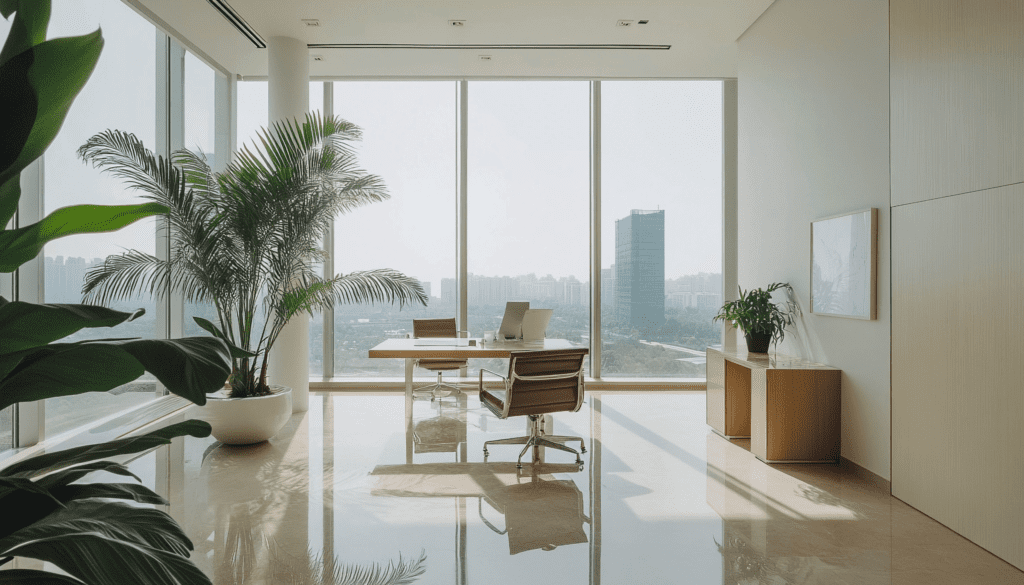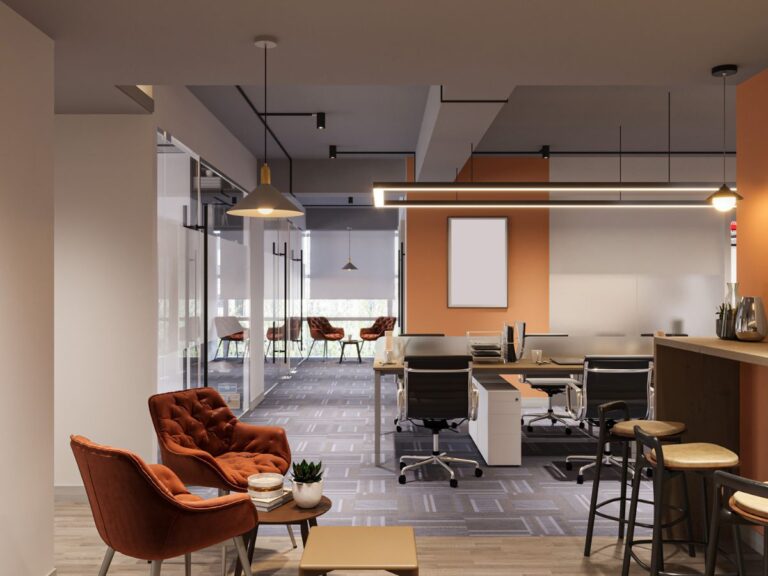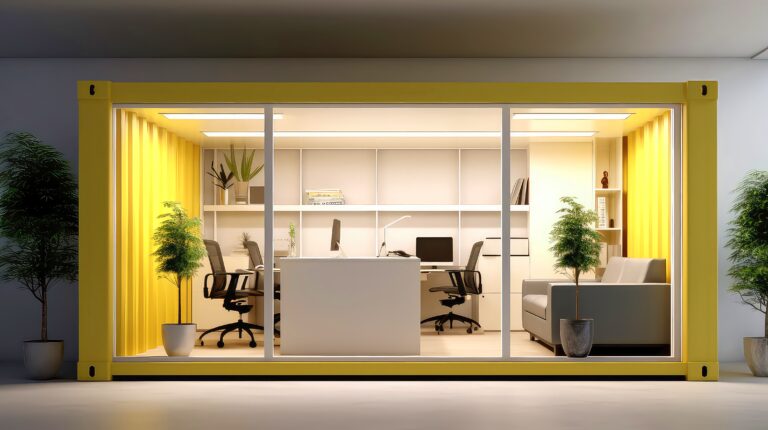Introduction
Practice is needed when developing a healthy culture necessary for employees and employers in a workplace. A happy worker is a productive worker and having this kind of workforce motivates them to support and work for the success of the company. However, culture of workplace is not an unalterable element; as a result of existing and developing constantly transformed working environment the culture of the place has to be sustained and developed. This post will also discuss multiple strategies for enhancing the workplace culture with the focus on the following ideas: utilization of natural light at work; employing flexibility in workplaces; and Green Workplace orientation.
Incorporating of Natural Light in an Office Environment
Day lighting is a feature that most employees take for granted while designing an office. Substantial research done in the past has indicated that natural light exposure might lead to increase in the happiness, productivity and overall welfare of the employees at work. However, it is important to note that natural light is a rather useful tool in improving the culture of working places.

Why Natural Light Matters:
Day light regulates our biological clocks which are crucial for our daily rest as well as day to day functioning of our body. People who work under natural light at their workplace are refreshed, have better sleep and are more conscious than employees whose work involves staying indoors with no outside light provisions source. This in effect results to more productivity as well as a happier workplace.
How to Incorporate More Natural Light:
- Design Open Spaces: Thus, there might be free access to natural light within the office space since some of the barriers or partitions in between are not necessary. The flexibility to have open rooms does not only bring in natural lighting into the building but also encourages employees’ teamwork.
- Use Glass Partitions: In a situation that requires seclusion, then it is recommendable to use an option of glass barriers rather than walls. Finally, glass allows light to pass through while at the same time providing for some kind of screen.
- Position workstations near windows: Position desks in such a way that the majority of the staff gets to be next to the window. This small change can greatly enhance their opportunity to be exposed to Natural light.
- Install skylights: Skylight is also another way of introducing more natural light into the room especially if your workplace is in a one story building.
Foster Adaptive Workplaces
A rapid-changing work environment is what prevailed today and thus being adaptable is crucial more than ever. Dynamic environments in general can be rapidly and effectively managed to respond swiftly to change in the corporate settings whether it is as a result of evolving technologies, shifts in markets or even in the worst unforeseen cases such as the current COVID 19 pandemic.

Why Adaptability is Key:
Work climate must fit the needs of the employees within and outside the working environments. This covers flexible working weeks, teleworking options and exquisite office furniture which can be easily customized to accommodate different preferences. Thus, the organisations that create the culture of adaptability, could attract and maintain the high-quality workforce, make happy employees and stay successful in the environment which is frequently changing.
How to Create an Adaptive Workplace:
- Offer Flexible Work Arrangements: As the employees are allowed to work flexible hours and locations their work-life balance may be greatly enhanced. Think of offering the work from home option, flexible working hours for joining and leaving, and fewer working days.
- Implement Agile Workspaces: This kind of workplaces is supposed to be flexible and multifunctional. Seating can be easily reconfigured to address a number of tasks – from the group work incubation to the individual focused work. Thus, mobile furniture, variable working environments and multipurpose zones constitute the foundations of the modern working organization.
- Encourage Continuous Learning: Adaptive workplaces enable people to keep on learning throughout their working journey. Make staff have access for training programs, workshops and tools that will enable them to be updated with new knowledge in the field.
- Promote a Growth Mindset: You need to make the changes and turns as opportunities that people should embrace willingly. When set into a fast changing environment, a culture that favors testing, innovativeness, and especially embracing failures will be more helpful than a conservative culture.
Create a Greener Workplace
It is not a secret that sustainability has ceased to be a trend, but a key part of a healthy organizational culture. It will help to reduce environmental impact, though it may also enhance the workers’ health and reduce expenditures for maintenance.

Why Sustainability Matters:
There has been a rising interest of the employee to work for an organization that support sustainability. A greener workplace could enhance the quality of air, reduce work pressure or stress and provide an enjoyable and healthier workplace. In addition, sustainability work can help reduce energy consumption and waste; thus, the organization will benefit from the financial savings.
How to Make Your Workplace Greener:
- Incorporate Plants: One of the ways of bringing in the green aspect on the office is through the use of plants. It is not only an air purifier, capable of removing carbon dioxide and greying up the surroundings, but a stress-buster for its occupants as well, consequently raising the efficiency of employees.
- Reduce Energy Consumption: Increase efficiency by adopting energy management measures such as using efficient lighting or programmatic lighting control systems, using energy-efficient heating systems, and persuading people to switch off their computer and other devices when they do not need it. It is also important to think about problems such as lack of electrical power and invest into facilities such as solar panels.
- Promote Recycling and Waste Reduction: It should also be easy for staff to recycle and this can be achieved through having well labeled recycling bins all over the office space. Promote the use of recyclable carry, coolers, drinking water flasks, and cutlery so as to reduce wastage. You may also organize a composting system in waste food.
- Use Sustainable Materials: If redoing an office from scratch or renovating an old one, then it is advisable to use materials that are environmental friendly such as recycled timber, low volatile organic compound emitting paints, and environmentally friendly floor boards. These materials are not only a good save from polluting the office’s impact on the environment but also influence the interior climate positively.
Encourage Open Communication and Feedback
Relations between employees and employer should be depicted in an amicable manner as well as organizational culture should encourage people to give their opinions. It is possible to deduce that when the employees are valued, they will be dedicated and committed to their work.

How to Foster Open Communication:
- Create Safe Spaces for Dialogue: Share ideas freely by building open forums where by employees can give out their opinions concerning a certain issue without having to face some sort of sanction. This may present itself in daily team huddles, weekly sessions with their managers, or an idea suggestion box.
- Act on Feedback: It’s not enough to just gather feedback; you also have to respond to them. Let employees know that their input is valued by using their suggestions, acting on them and informing the employees of further progress.
- Lead by Example: From this perspective, it can be seen that leaders give a crucial role in the shaping of the culture of organizations. Managers can encourage subordinates to act in a like manner such as when leaders display free and open communication and a disposition to listen to their employees.
Conclusion
Internal change is a process that needs constant focus and engagement on the part of the organization, its leaders and managers and the employees, to meet their needs and enhance the quality of their lives in the workplace. Organizational culture can be created by admitting natural glass with light in the workplace, flexi-space, environment conservation, and effective communication in the workplace. Self-organizing work environment is beneficial to individual staff and the firm in general. With today’s cut throat competition in the business world, improving the workplace culture is not a choice anymore – it is a necessity.








